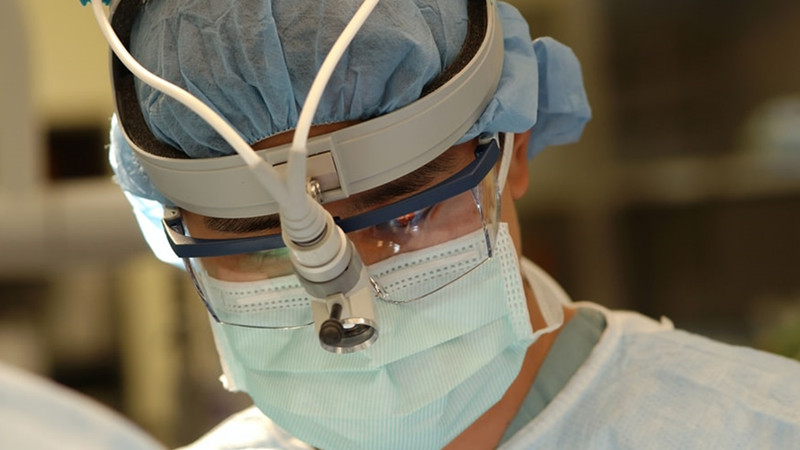Five Technology Trends in Healthcare for 2022
In a recent report by the US “Forbes” biweekly website, it listed five technology trends in the field of healthcare in 2022: telemedicine, personalized medicine, genomics and wearable devices will usher in rapid growth. New and better therapies and services will be developed and delivered using technologies such as artificial intelligence (AI), cloud computing, virtual reality and the Internet of Things (IoT).

01
Wearables power telemedicine
In the first few months of the new crown epidemic, the proportion of telemedicine consultations soared from 0.1% to 43.5%, and the proportion will increase in the future, and the reason is obvious – this trend is expected to provide more patients with life-saving opportunities.
To achieve this, next-generation wearables are equipped with heart rate, pressure and blood oxygen detectors that allow doctors to accurately monitor patients’ vital signs in real time. During the epidemic, “virtual hospital wards” were established in some places. Doctors used the central communication infrastructure to monitor the treatment of patients in many places. The Pennsylvania Emergency Medicine Center in the United States is developing a more advanced version of “virtual emergency room”.
In 2022, telemedicine approaches will expand into other areas, such as improving the mental health of patients and providing ongoing follow-up care for surgical and critically ill patients.
Robotics and the Internet of Things will play an important role in this trend, for example, smart technology (machine learning) will alert professionals when sensors detect the need for intervention or cameras detect a fall in the elderly at home.
02
VR for clinical training and therapy
Virtual reality (VR) headsets are currently being used to train doctors to understand how the human body works. VR is also used in therapy, such as to train children with autism in social and life skills; and to promote cognitive behavioral therapy to help treat chronic pain, anxiety and even schizophrenia. VR-based therapies have been developed to allow patients to overcome fear and treat psychosis in a safe and non-threatening environment.
In 2022, the use of augmented reality technology in the medical field will also continue to grow.
03
Using AI and Machine Learning to Understand Medical Data
As in other industries, the important role AI plays in healthcare includes making sense of large volumes of messy, unstructured data. The data includes data obtained from X-rays, CT and MRI scans, data on the distribution of vaccines for infectious diseases such as Covid-19, as well as live-cell genome data, and even handwritten notes by doctors.
AI can also be a good helper for doctors and improve their job skills. For example, AI can easily touch and triage patients, freeing up clinicians for more valuable work. And telehealth provider Babylon Health uses an AI chatbot, through natural language processing, to collect information on patients’ symptoms and consult directly with the appropriate medical professional.
In the coming years, AI will have a profound impact on the field of preventive medicine. Preventive medicine does not respond to disease by providing treatment after the fact, but predicts when and where disease will occur and develops solutions before it occurs. This includes predicting the location of infectious disease outbreaks, patient readmission rates, and lifestyle factors such as diet, exercise, and exercise. These tools are able to spot patterns in huge data sets more efficiently than traditional analytical processes, leading to more accurate predictions and ultimately improved outcomes.
04
‘Digital twin’ replaces animal testing
“Digital twins” are currently emerging in several fields, and “digital twins” refer to the creation of a digital model based on data obtained in the real world, which can be used to simulate any system or process.
In the medical field, this trend includes digital simulations of “virtual patients” — those testing drugs and treatments, with the aim of shortening the time it takes for a new drug to move from the design stage to the generic stage.
As it stands, “digital twins” of human organs and systems are closer to reality, allowing doctors to explore the causes of disease in different organs and test treatments without the need for expensive human or animal testing. The “Living Heart” project launched in the United States in 2014 aims to create an open-source “digital twin” of the human heart; a similar “Neural Twin” project in the European Union simulates the interaction of electric fields in the brain, hoping to provide Alzheimer’s Disease brings new treatments.
05
Personalized Medicine and Genomics
Modern medical technologies, including genomics, AI, and “digital twins,” will allow doctors to take a more personalized approach, tailoring treatments to patients’ own conditions.
Genomics, the study of genes and the use of technology to map an individual’s genome, is particularly useful for developing personalized medicine, which could lead to new treatments for diseases such as cancer, arthritis and Alzheimer’s.
Cheersonic is the leading developer and manufacturer of ultrasonic coating systems for applying precise, thin film coatings to protect, strengthen or smooth surfaces on parts and components for the microelectronics/electronics, alternative energy, medical and industrial markets, including specialized glass applications in construction and automotive.

